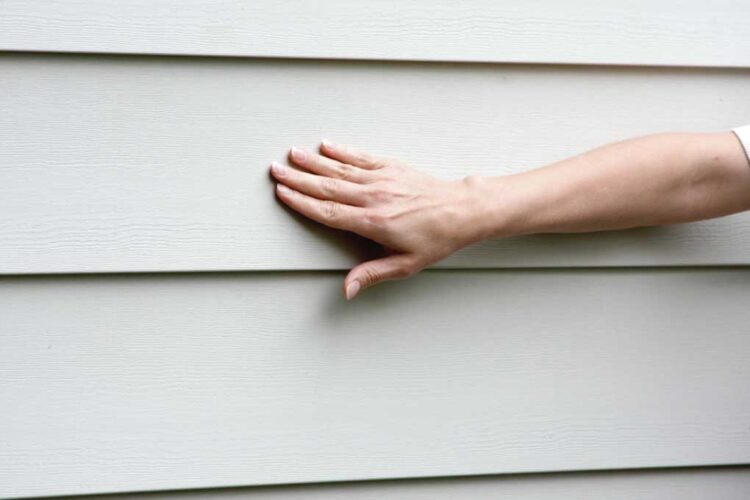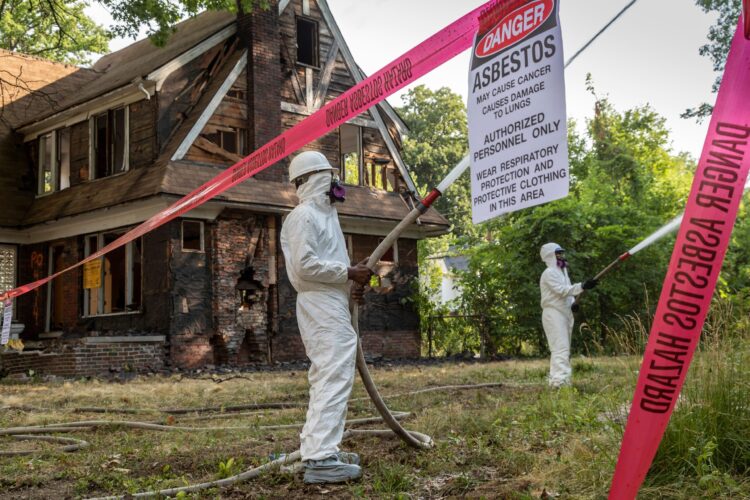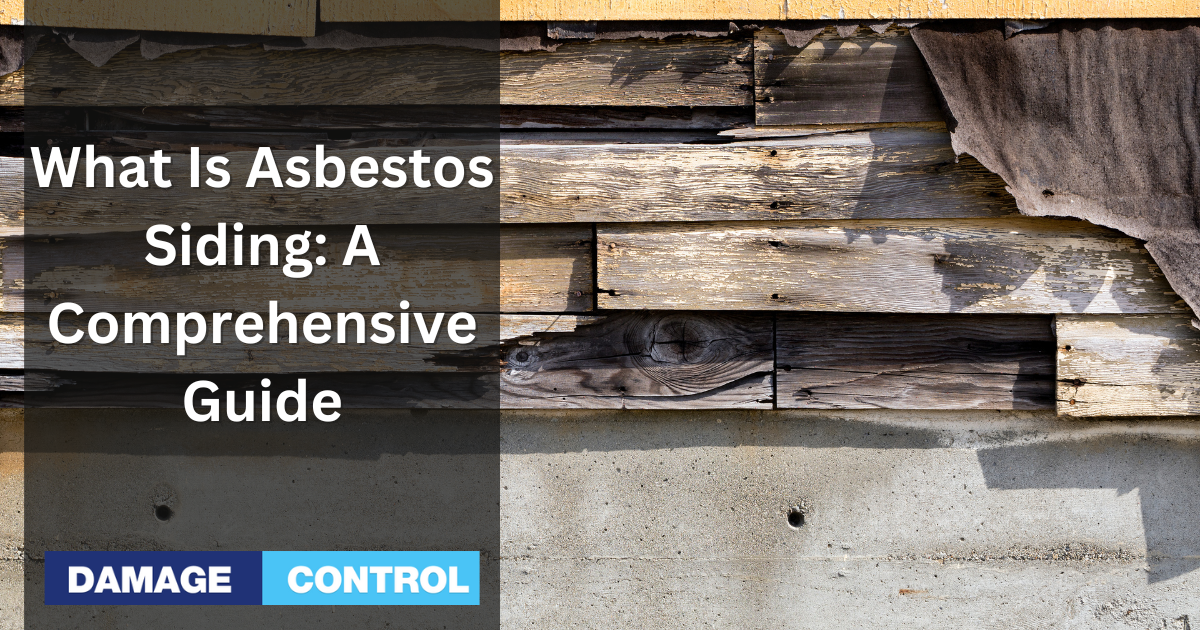Alright, let's dive into the world of asbestos siding. Picture this – it's early 20th century. Portland cement meets asbestos fibers. Bingo! Asbestos siding is born. It's strong, it's low-maintenance. It's everywhere, from cozy university neighborhoods to bustling downtown districts.
But wait. There's a plot twist. When asbestos takes to the air, trouble brews. Breathing it in? Not so good for us. The culprit? Any activity that ruffles up these dangerous fibers – we're talking repairs, renovations, even demolitions.
So, when does our house guest, asbestos, overstay its welcome? The moment it gets disturbed, my friends. That's when it turns into a health menace, spewing tiny, hazardous particles into the air.
Now, imagine you're on the hunt for a charming, older home. Here's the million-dollar question – does it have asbestos siding? It's a toughie, because this stuff ages beautifully. Decades old, yet almost new. But watch out for damage. That's when you run the risk of asbestos exposure. Call in the pros to give the siding a once-over if you smell a rat.
So there you have it! Navigating the asbestos world might seem tricky, but it's all about being informed and ready to take action. The optimism is free and so are the precautions! Stay smart, stay safe. Let's keep our homes, and our lungs, happy.
What Is Asbestos Siding?

Definition of Asbestos Siding
Alright, let's time travel back to the homebuilding scene from the early 1900s to the 80s. The hero of our story? Asbestos siding. Packed with asbestos fibers, this siding was the toast of the town. Why? Well, these fibers are strong, they're durable, and boy, do they laugh in the face of heat!
But here's the kicker. These tough-as-nails fibers are toxic when we breathe them in. That's right, toxic. Think nasty health woes like lung cancer, mesothelioma, and asbestosis. Yikes!
But don't panic! We've got the lowdown on managing these risks. Stay tuned to keep your home and health in the clear. Always remember, knowledge is power, and the right precautions are your shield in the face of asbestos.
History of Asbestos Siding
Okay, folks, let's hop in our time machine back to the early 1900s. What's happening? Well, asbestos siding is making a grand entrance! Taking over from traditional wood siding, it's hitting the homebuilding scene big time. Affordable? Check. Durable and fire-resistant? Double check. Plus, it's a breeze to install and maintain. Homeowners are loving it.
But then, the 1970s roll around. The ugly truth about asbestos exposure starts making headlines. Suddenly, countries are banning asbestos in building materials left, right, and center. No more manufacturing asbestos siding. But wait, many houses still have it.
Fast forward to today. If you've got asbestos siding, experts are saying it's time to swap it out for something safer. Yet, removing it isn't a walk in the park. It's costly and can send those hazardous asbestos fibers airborne.
Don't lose heart, though! Yes, it's a challenge, but we can navigate this with the right precautions and expertise. There's a brighter, asbestos-free future for your home out there, and we're here to help you reach it. Safety first, onward and upward!
Why Was Asbestos Used in Siding?
Benefits of Asbestos Siding
So, what made asbestos siding the darling of homeowners back in the day? For starters, it was like a superhero, shielding homes from fire and rough weather. Top that off with easy insulation and maintenance, and we've got ourselves a winner!
Talk about standing the test of time! Asbestos siding was built to last. Houses from the 1950s and 60s? Some still flaunt their original asbestos siding. And guess what? It didn't burn a hole in homeowners' pockets either. It was a steal compared to other siding materials!
Sure, asbestos has its downsides, but recognizing its strengths gives us insights into homebuilding history. Today, we have safer alternatives that still offer durability, cost-effectiveness, and protection. It's all about keeping the lessons and leaving the risks behind. Here's to smarter, safer choices in homebuilding!
Risks of Asbestos Siding
Hold up! There's a twist in our story. Asbestos, for all its charms, has a dark side. Those tiny, invisible asbestos fibers? Inhale them, and we're talking serious health no-nos like lung cancer, mesothelioma, and more respiratory nasties.
Danger signals? Damaged, broken, or cut asbestos siding. That's when these microscopic troublemakers can hitch a ride on air currents and get breathed in. Got suspicions your home might have asbestos siding? Don't turn detective on your own – get a professional on the case. They'll test it and guide you on safe removal.
It sounds scary, but remember: we're all about proactive, positive action here! With the right knowledge and the right people on your team, you can tackle asbestos safely and effectively. No challenge is too big when we face it head-on. Let's turn this problem into a success story!
How to Identify Asbestos Siding
Alright, picture this: it's somewhere between the roaring 20s and the rockin' 80s. Asbestos siding is all the rage for new homes. But, fast-forward to now, we know better. Those tiny asbestos fibers? They're sneaky little health hazards, causing big problems like lung cancer and mesothelioma.
Got a hunch your home might have jumped on the asbestos siding bandwagon back in the day? It's game time. Your mission is to confirm it and gear up with the right precautions. Remember, you're not just protecting bricks and mortar, but the people inside – your family.
Sounds heavy, right? Don't sweat it! You can tackle this asbestos adventure safely and effectively with the right steps. It's all about turning a challenge into an opportunity for action. Remember, knowledge is power and caution is your superpower. Onwards and upwards, folks!
Visual Identification
The first step in identifying asbestos siding is to inspect your home's exterior visually. Asbestos siding typically has a few distinct characteristics:
- It has a corrugated or flat surface texture.
- It is gray, white, or beige in color.
- It may have small, round nail heads visible on the surface.
- It may have a chalky residue on the surface.
If your siding matches these characteristics, it is possible that it contains asbestos. However, visual inspection alone is not enough to confirm the presence of asbestos.
Lab Testing
Ever wonder how we confirm if asbestos is playing hide-and-seek in your siding? The answer's simple: lab testing. Take a small slice of your siding, send it off to a certified asbestos testing lab, and voila! They'll analyze it and send you a detailed report on any asbestos fibers they find.
But wait, there's a catch. Sampling your siding isn't like picking a flower from the garden. You've got to gear up! Dust mask and gloves? Check. Disturb the siding as little as possible? Double-check. Not feeling like a DIY superhero? No problem. You can always bring in a pro asbestos contractor to do the job.
Sure, it sounds a bit intense, but remember, this is all about keeping you and your home safe. With the right precautions, you can turn this mission into a success.
What to Do If You Have Asbestos Siding

Take the necessary steps to address asbestos siding if you suspect your home has it. Exposure to asbestos can cause lung cancer and mesothelioma. In this section, you will learn what to do if your home has asbestos siding
Removal Options
Want to know if your home is hiding some asbestos in its siding? It's time to become a bit of a detective. The secret weapon in this investigation is lab testing. All you need to do is snip a small piece of your siding and send it over to a certified asbestos lab. They'll put it under the microscope and let you know if there are any asbestos fibers lurking in there.
Now, getting that sample isn't like cutting a slice of pie. It needs a gentle touch and the right gear – think dust mask and gloves. But don't worry, it's not as scary as it sounds! And if you'd rather have a professional take the lead, that's always an option.
Remember, this is all about keeping you and your home safe and sound. And with the right steps and a little know-how, you'll be able to do just that. Let's handle this, one step at a time!
Legal Considerations
Think it's time to say goodbye to that old asbestos siding? Great! But here's the thing, asbestos is not your typical siding material. It's regulated, meaning there are laws and rules about removing and disposing of it.
Before you start your DIY asbestos removal, take a moment to chat with your local environmental agency or building code official. They're there to guide you through the right steps, ensuring you're following the rules. Not keeping up with the regulations can lead to fines and legal headaches, and we definitely don't want that!
Remember, doing things the right way might take a little more time, but it'll save you a lot of trouble in the end. So let's keep things legal, safe, and stress-free as we bid farewell to that asbestos siding. One step at a time, we've got this!
Is Asbestos Siding Safe?
Picture it: the 1920s to the 1970s, asbestos siding was the star of homebuilding. It was sturdy, fire-resistant, and easy on the wallet. But then, plot twist! Asbestos was unmasked as a health villain, causing serious conditions. These days, it's not a part of new constructions, but it's still hanging around in many older homes.
Here's the tricky part: asbestos only turns bad when disturbed. That's when it sends microscopic fibers airborne; if breathed in, it's a problem. These fibers can lead to long-term diseases, leading to its ban in homebuilding.
Think your home might have some undercover asbestos siding? Time to call in the pros for a test. If it turns out you've got asbestos, you've got a decision to make. If the siding is still in good nick and not causing trouble, it might be safe to leave it be. But if it's damaged, it's time for it to go.
Now, removing asbestos siding isn't a weekend DIY project. It can be pricey and time-consuming, but it's a top priority for your family's safety. If you decide to part ways with the asbestos, find a licensed contractor experienced in handling it. They'll ensure to follow all safety steps to keep those asbestos fibers under control.
Sounds like a bit of an ordeal? Don't worry! You can make your home safe with the right help and a proactive approach. Let's tackle this challenge head-on and make your home a safer place. One step at a time, we've got this!
Conclusion
As we wrap up our journey through the history and handling of asbestos siding, remember that knowledge is your superpower. Understanding the risks, identifying the signs, and knowing how to navigate potential asbestos in your home safely is crucial. Sure, it might seem a bit daunting, but remember, every challenge is an opportunity for action. Armed with the right information and a can-do attitude, you're more than ready to ensure your home is a safe and healthy space. Onwards to a brighter, asbestos-free future!

